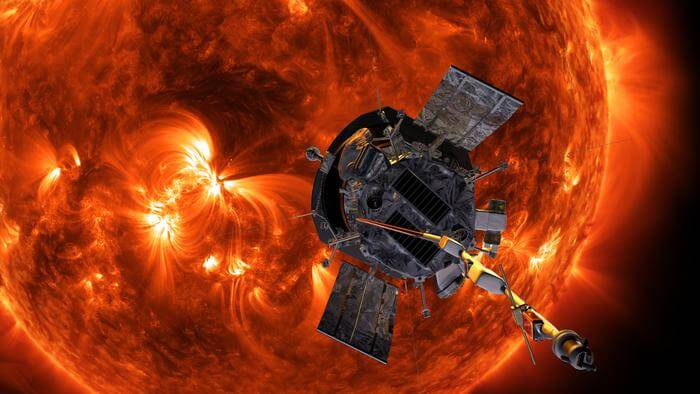NASA’s Parker Solar Probe (PSP) has achieved a remarkable feat by getting really close to the sun. This allowed it to closely study the solar wind, which are tiny charged particles that the sun sends out. It’s a bit like trying to understand how water flows from a shower by getting hit by the water straight in the face.
Stuart D. Bale from the University of California, Berkeley, and James Drake from the University of Maryland-College Park have written an important paper about their findings. They found that the PSP picked up powerful particle streams from areas on the sun’s surface called coronal holes. They believe these holes might be the starting point of the fast solar wind.
Coronal holes are special areas on the sun’s surface that let magnetic field lines out into space instead of looping them back into the sun. Usually, these holes are at the sun’s poles and the solar wind they create doesn’t hit Earth. But every 11 years, when the sun’s magnetic field flips, these holes can appear anywhere, causing solar wind bursts that directly hit Earth.
Knowing where the solar wind comes from can help us predict solar storms. These storms can create beautiful northern and southern lights on Earth but can also mess up satellites and electricity networks. Drake emphasizes the need to understand the sun’s wind because it brings vital information from the sun to Earth. This knowledge can help us understand how the sun releases energy and creates storms that could pose a risk to our communication systems.
Their analysis showed that coronal holes are like showerheads, spraying jets from bright spots where the sun’s magnetic field lines move in and out of the sun’s surface. They suggest that when two opposite magnetic fields meet in these spots, they often break and reconnect, sending charged particles out into space.
Bale explained that the sun’s surface or photosphere is covered with convection cells that act like boiling water. This movement on a large scale is called supergranulation. These supergranulation cells pull the magnetic field into a funnel shape when they meet and sink. In these funnels, the magnetic field becomes much stronger. This is what they are now seeing thanks to the data from the solar probe.
Bale and his team believe that a process known as magnetic reconnection, which is the breaking and rejoining of magnetic fields, causes the creation of the fast solar wind. They base this on the very high-energy particles that PSP detected, which move 10 to 100 times faster than the regular solar wind. They think that only magnetic reconnection could create this wind.
The PSP was launched in 2018 to figure out the origin of the high-energy particles that make up the solar wind. Two theories were proposed: magnetic reconnection or acceleration by waves of hot plasma or Alfvén waves. Bale’s team concluded that magnetic reconnection happening within these funnels provides the energy source for the fast solar wind.
These funnel structures might match the bright spots that we can see from Earth within coronal holes. Nour Raouafi from Johns Hopkins University, who also worked on this study, reported this. The Applied Physics Laboratory at Johns Hopkins was in charge of designing, building, and operating the spacecraft.
The probe’s mission was to find out what the solar wind looks like close to its origin at the sun’s surface and how these charged particles manage to escape the sun’s gravity. The PSP had to get within 13 million miles of the sun to do this. Once it did, the solar wind seemed to change less and showed more structure, revealing more about the sun’s surface.
In 2021, PSP’s instruments noticed changes in the magnetic field in the Alfvén waves, which are connected to the areas where the solar wind comes from. The data suggested that it was moving through jets of material, not
just turbulence. Bale, Drake, and their team traced these jets back to the supergranulation cells on the sun’s surface, where magnetic fields gather and move into the sun.
They wondered if the charged particles in these funnels were sped up by magnetic reconnection, which would throw the particles out, or by waves of hot plasma coming out of the sun. The PSP detected extremely high-energy particles in these jets, leading Bale to conclude that magnetic reconnection speeds up the particles and creates the Alfvén waves, which likely give the particles an extra push.
Bale said that the PSP can’t get closer than about 4 million miles from the sun’s surface, because it would damage its instruments. But he hopes that data from that distance will still support their findings. Even though the sun is becoming more active, which may make it harder to observe these processes, Bale thinks they were lucky to launch the probe during a quieter phase of the sun’s cycle. This made it easier to understand what’s going on.
If our reporting has informed or inspired you, please consider making a donation. Every contribution, no matter the size, empowers us to continue delivering accurate, engaging, and trustworthy science and medical news. Independent journalism requires time, effort, and resources—your support ensures we can keep uncovering the stories that matter most to you.
Join us in making knowledge accessible and impactful. Thank you for standing with us!

